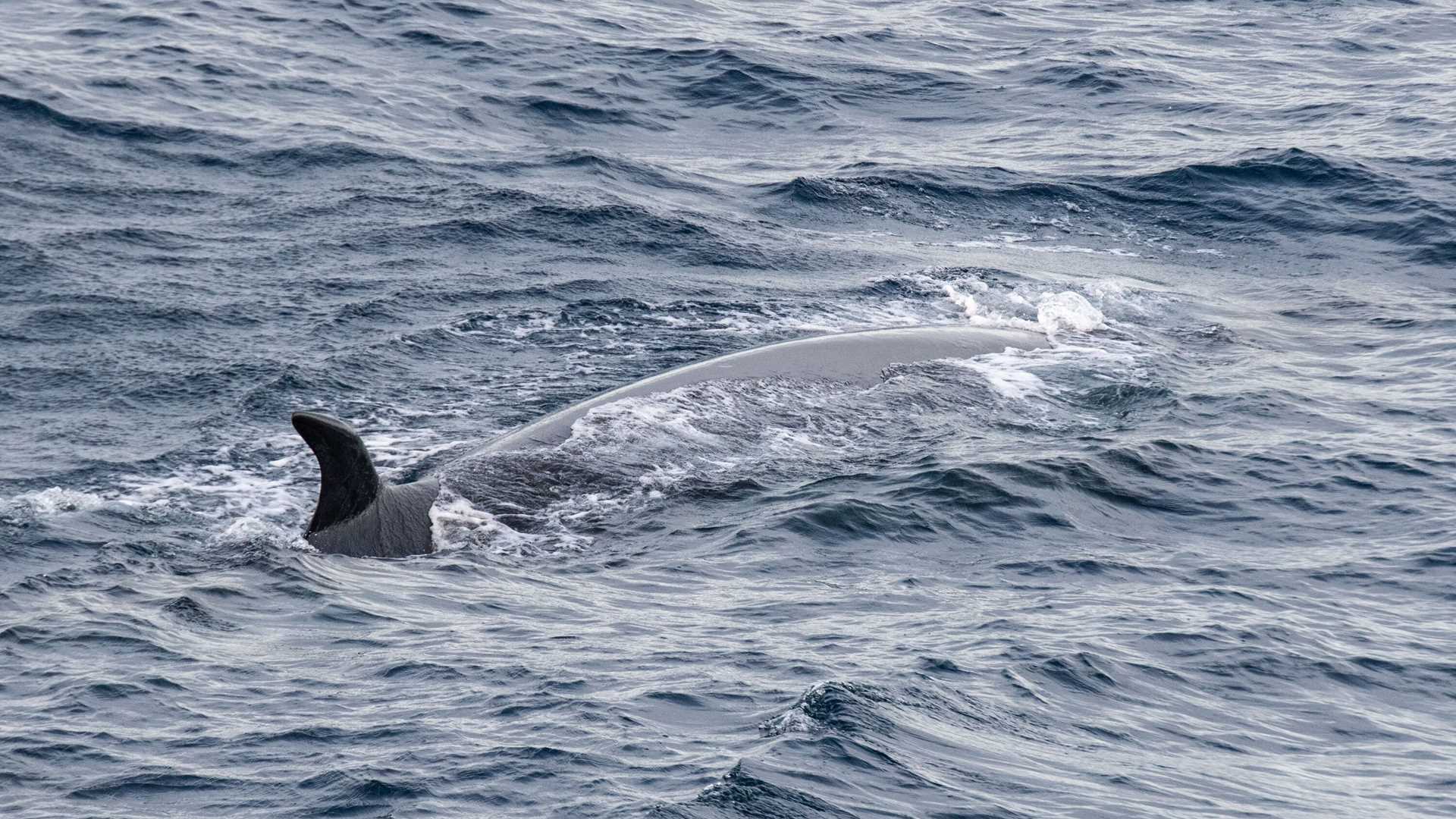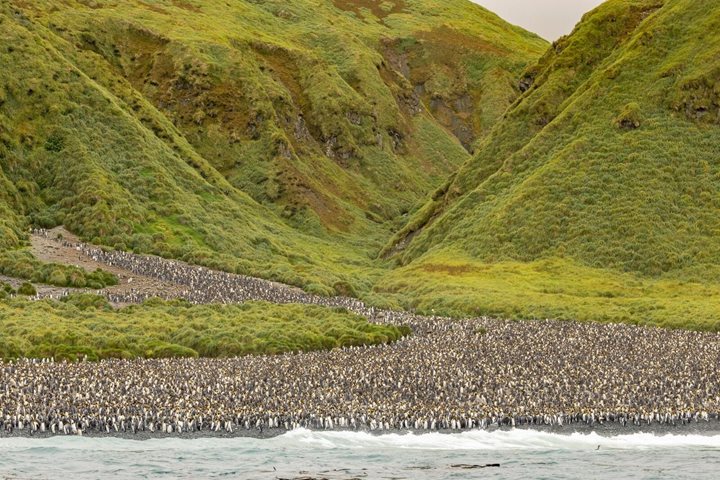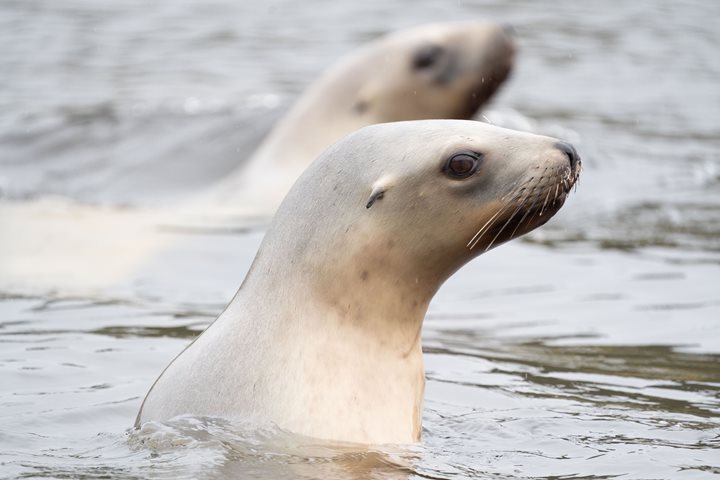After three wonderful days in New Zealand’s Subantarctic Islands, we are making our way south to Macquarie Island, within the Tasmin State of Australia. Macquarie is a UNESCO World Heritage site, namely for its fascinating geology. The intact seafloor was pushed above sea level by mid-oceanic convergence to form the island. The same ridge that produced Macquarie Island also creates ocean currents that generate biodiverse hotspots, and we were greeted with evidence of just that this morning. During breakfast, we spotted several whale blows in all directions around National Geographic Endurance. We sighted two southern right whales, one of the rarer cetaceans in the Southern Ocean, and numerous sei whales. We were also escorted by a large pod of long-finned pilot whales. The large males and pairs of mothers and calves were just off the bow. They had large, round, shiny heads, white blazes, and beautiful saddles. It was truly a treat to watch them effortlessly move through the water as a unit before disappearing together in one fluid dive.
We had two lectures by the photo team. One helped us better understand the phone in our pockets, a.k.a. our smartphone, and the other helped us improve our bird photography. Next up was a lecture on the smell of the ocean by naturalist Conor Ryan. We learned how birds find dense prey aggregations in the vast ocean they call home.
The seas were relatively calm, and the fog came and went throughout the day. Albatrosses soared along effortlessly as we moved toward our next destination. The air is getting noticeably cooler. Soon we will lose sight of the vegetation we have been enjoying along with the milder temperatures. We are getting ever closer to the Ross Sea. We are getting closer to Antarctica.








